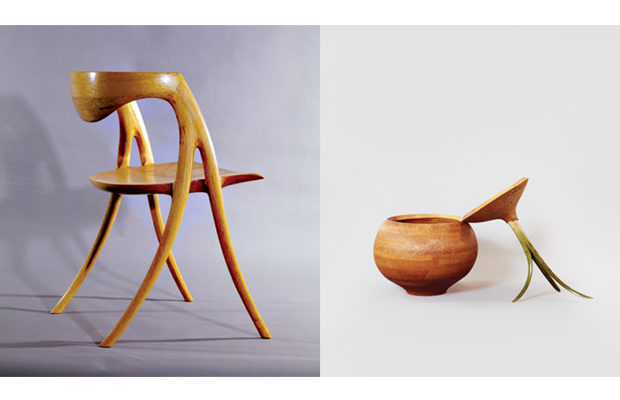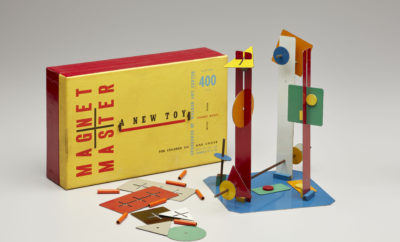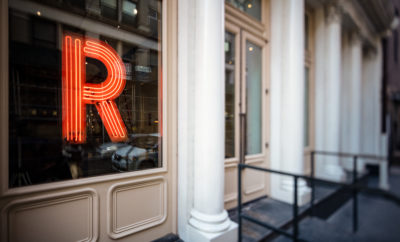 Courtesy Moderne Gallery
Courtesy Moderne Gallery
Exhibition
Celebrating the first half century of a master woodworker’s life
It is safe to say that David N. Ebner was born to work in wood. Among his earliest recollections—as recounted in a new book on his work—are the hours spent in his father’s workshop, where, by the age of nine, he had made his own baseball bat. Beginning in 1964, as a student at Rochester Institute of Technology’s School for American Craftsmen he studied with Wendell Castle and William Keyser and began to identify himself as an artist-craftsman.
Not quite fifty years later, Philadelphia’s Moderne Gallery is mounting a major retrospective of Ebner’s work. The exhibition, which opens April 25, includes more than sixty chests, stools, chairs, mirrors, desks, benches, and consoles that, taken together, paint a portrait of the designer’s craft. Robert Aibel, the founder of Moderne and a leading expert in the American studio furniture movement, has represented Ebner for more than a decade. “He forged a style of his own from the very beginning and has never allowed himself to stop evolving,” Aibel writes in his foreword to the lively and wide-ranging newly published David Ebner: Studio Furniture, by Nancy N. Schiffer. “It is exciting to present David’s sculptural furniture as he is constantly developing his own ideas and styles in fascinating ways, Aibel says.”
Ebner likes to call his designs “antiques of the future.” Because he often draws on traditional forms but remakes them in a thoroughly contemporary way, he sees them as “classical impressions” in which he relies on the forms of the past but removes the embellishments.
His work, most often in fine hardwoods, melds sculpture and furniture, art, and craft. It is sometimes graceful and delicate and sometimes far sturdier and more forceful. His Twisted Sticks series from the mid-1990s incorporates naturalistic forms drawn from his observations of the way honeysuckle vines wrap around themselves. His scallion- and onion-inspired chests and coat racks (he says they are among his favorites) are at once witty and timeless. His elegant, highly articulated Sternum series—it includes both a music stand and a dictionary stand along with tables and chairs—was inspired by looking at the bones of a duck he had eaten for dinner. Although he is versatile, his most recognizable pieces usually stand on improbably slender splayed legs and have precise joinery.
A dovetailed joint stool he made shortly after settling in Eastern Long Island (first in Blue Point, then Brookhaven, and finally Bellport) was selected for the 1975 exhibition Craft Multiples at the Renwick Gallery of the Smithsonian Institution in Washington, D.C., and was later selected for the museum’s collection. Dated 1974, it is now known as the Renwick Stool and signaled the start of Ebner’s success and recognition. Another 1974 piece, a rocking horse made of carved Douglas fir and German yellow pine, was selected for the juried exhibition Bed and Board at the deCordova Museum in Lincoln, Massachusetts.
Moderne’s exhibition, entitled David N. Ebner: 50 Years of Studio Furniture, traces all this and much more. It runs through August 15, 2014. modernegallery.com












